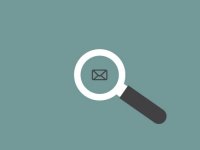How to Save Time by Reducing Email: 6 Strategies for Staying Afloat
As teachers, we need to protect our professional time vigilantly. But email, that ravenous beast, can eagerly devour our prep periods and infringe on our time outside of school. When let loose, it can distance us from the important tasks of the profession like planning, grading, and developing ourselves professionally. If we are disciplined, though, email doesn't have to be a beast of burden -- we can use it as a weapon of efficiency, making us more frequent communicators with parents and administrators, more effective record keepers, and more focused in our growth.
Here are six strategies for reducing the flood of messages we receive and becoming more pragmatic with our replies, freeing time for more important endeavors.
1. Unsubscribe Ruthlessly
According to the email service provider Mail Chimp, only 18.6 percent of education newsletter emails are opened, and worse, 2.6 percent of links in those emails are clicked. We all do it -- subscribe to things that we don't bother to read. The first step to controlling email and mastering efficiency is to unsubscribe from every list that is not read regularly. A good rule of thumb is if you don't read, reply, or click on the links in the message 50 percent of the time, you should unsubscribe.
2. Limit Checks
Smartphones make us obsessive email checkers. According to a recent study, subjects checked their phones 34 times a day. All of those checks, which typically lasted from 30 seconds to ten minutes, can add up on their own. Those small chunks of time consumed by email are magnified by the added cost of lost momentum. In a cnn.com article, Dr. Adam Gazzaley, a neurologist at UCSF, stated, "Whenever you take a break from what you're doing to unnecessarily check your email, studies show, it's hard to go back to your original task."
Here's how to beat it. Have set times each day that you check email, preferably twice. When you do check it, take one of three actions on each message -- delete, reply, or archive in a folder. This saves you from having to read everything. Do this, and you can have your inbox processed in under two minutes. Then it's just a matter of taking action in the appropriate folders. There will be more on the advantages of folders in a bit.
3. Purge Regularly
There is great satisfaction in achieving an empty inbox. It's a masterful feeling, knowing that you tamed your digital beast, not the other way around. To achieve this consistently, you must purge the old to make way for the new. Once a month, go through your email folders and let go of what's no longer relevant. The minutes from last month's faculty meeting -- gone. That notice from the main office three months ago about all employees needing to return their yearly attendance record -- sayonara. While this step is not a huge a time saver, it is important to do once a month because of its emotional weight.
4. Create Templates
Creating templates for letters and notifications is the easiest way to maximize your output and is probably the most effective time saver. Emails for Student of the Month, missing homework, and outstanding acts of kindness can be dashed off and sent in seconds if we have prepared templates. Just plug in names and customize when necessary.
Here is one that I use for those tricky questions about a low grade. I try to steer the conversation toward the learning and move it away from the number in the grade book. What's in bold is what I customize.
5. Filters Are Your Friend
You can reduce your screen time by using filters to make sure that only the messages that matter reach your inbox. Not only do filters remove spam or viruses, but they can also be configured to organize incoming email by prioritizing messages and sorting them into folders based on subject matter or other criteria.
Here is a video that shows you how to do it.
6. Folders Are Your Friend, Too
I have three basic email folders:
- Take Action: For things that come into my inbox that I can’t answer at the moment but need to when I have more time later.
- Parent Records: My district requires evidence of routine parent contact, so every email to and from a parent gets archived in one place.
- Administrative Records: Purchase orders, meeting notifications, and evaluations are important to keep for your records. However, be sure to clear out this folder periodically.
How do you manage your email? What are your best tips?
